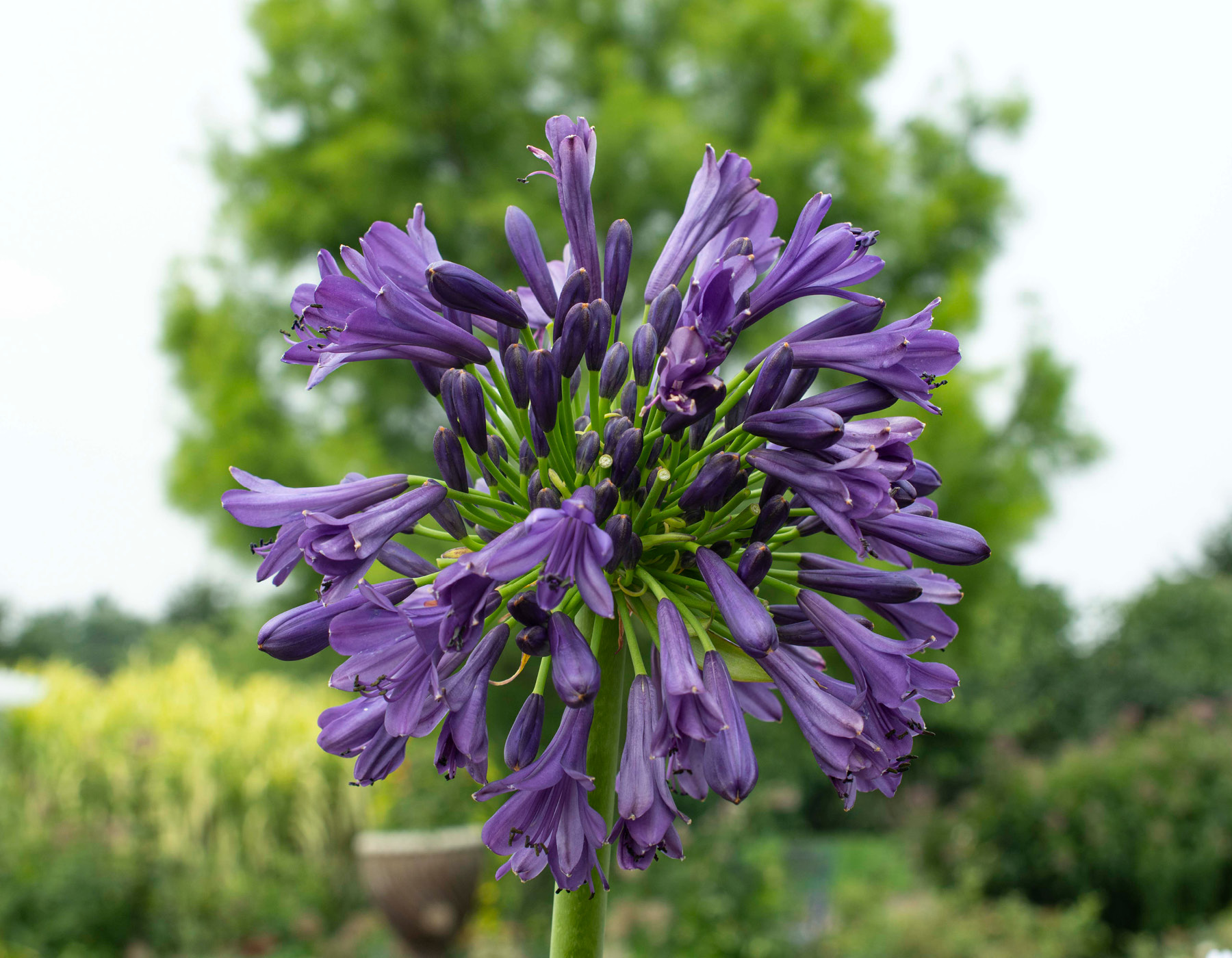Growing Agapanthus: A Full Overview to Beautiful Blooms
Growing Agapanthus: A Full Overview to Beautiful Blooms
Blog Article
Letting Loose the Secret to Effective Agapanthus Cultivation: Tips and Tricks for a Flourishing Garden
In the world of gardening, growing agapanthus efficiently requires a strategic method that incorporates numerous elements of plant treatment. By understanding the nuances of agapanthus cultivation, one can develop an atmosphere where these plants flourish and grow generously.
Growing Agapanthus: Finest Practices
When planting Agapanthus, proper soil preparation is crucial for guaranteeing effective development and development of these lovely flowers. Agapanthus, typically called Lily of the Nile or African lily, thrives in well-draining dirt with a slightly acidic to neutral pH degree - Agapanthus. Prior to growing, it is important to modify hefty clay soils with raw material such as compost or peat moss to enhance drain and supply necessary nutrients for the plants
To grow Agapanthus, choose an area that receives complete sunshine to partial color, as this will certainly advertise healthy and balanced development and abundant blooming. Dig a hole twice the size of the plant's root ball and put the Agapanthus at the very same depth it was previously growing. Gently backfill the hole with dirt, pushing down firmly to eliminate any air pockets around the roots.
Water the recently planted Agapanthus thoroughly and continue to keep the dirt equally wet, particularly during the plant's active growing season. Agapanthus. Using a well balanced fertilizer once a month can better support the plant's growth and blooming. By following these best practices for growing Agapanthus, you can develop a sensational screen of these fascinating flowers in your garden
Suitable Soil Issues for Agapanthus
For optimum growth and flowering success of Agapanthus plants, making certain the soil conditions are ideal is crucial. Agapanthus grows in well-draining soil with a slightly acidic to neutral pH level ranging from 6.0 to 7.0. This kind of dirt enables appropriate water drainage, preventing waterlogging which can lead to root rot. To boost soil drainage, take into consideration including raw material such as garden compost or peat moss when preparing the planting site. Furthermore, Agapanthus likes soil that is abundant in nutrients, so integrating a balanced plant food throughout the growing season can advertise healthy development and dynamic blooms.
:max_bytes(150000):strip_icc()/agapanthus-growing-guide-7368912_06ba-bf1fa268243b451387986fbd1e2433b3.jpg)
Watering and Fertilizing Tips
To make certain healthy and balanced development and lively blooms, appropriate watering and fertilizing techniques are top article essential for effective Agapanthus growing. Agapanthus plants benefit from regular watering, specifically during the growing season.
When it comes to feeding Agapanthus, a well balanced fertilizer with equivalent parts nitrogen, phosphorus, and potassium can be used in the springtime to advertise healthy growth and flowering. Slow-release fertilizers are ideal for giving nutrients slowly over a prolonged period. Stay clear of over-fertilizing, as this can result in extreme foliage growth at the expenditure of flowers.
Furthermore, integrating raw material like garden compost into the soil can improve nutrient levels and improve dirt structure, assisting in the general health of the Agapanthus plants. By adhering to these watering and feeding tips, garden enthusiasts can ensure their Agapanthus plants prosper and generate sensational displays of blossoms.
Pruning and Deadheading Techniques
Correct pruning and deadheading strategies play a vital role in preserving the wellness and looks of Agapanthus plants, matching the crucial methods of watering and feeding for effective cultivation. Pruning Agapanthus includes getting rid of invested flower heads, dead or yellowing leaves, and overall shaping of the plant to promote much better growth. Deadheading, the procedure of eliminating discolored blossoms, not only boosts the plant's appearance however additionally encourages more blooming.
When deadheading Agapanthus, it is suggested to snip off the flower stem at the base making use of sharp, tidy shears. This procedure redirects the plant's energy from seed manufacturing back right into root and vegetation development, advertising a much healthier and much more durable plant. Regular deadheading can extend the flowering period of Agapanthus and protect against self-seeding, which can result in congestion.
In regards to trimming, Agapanthus usually gain from a light trim after flowering to clean up the plant and encourage fresh growth. Reducing the invested blossom stems and removing any broken or dead vegetation helps maintain the plant's vitality and overall appearance. However, it is vital to avoid reducing right into the crown of the plant, as this can internet deteriorate its health and wellness.

Protecting Agapanthus From Pests and Diseases
Implementing efficient parasite and illness management strategies is important to safeguarding the health and wellness and vigor of Agapanthus plants in farming. One common bug that impacts Agapanthus is the Agapanthus borer, a caterpillar that passages right into the plant, causing damages to the leaves and blossoms.
In enhancement to bugs, Agapanthus are prone to diseases such as root rot and fungal leaf spots. By staying watchful and attending to parasite and illness issues immediately, garden enthusiasts can assist their Agapanthus grow and grow.

Final Thought
To conclude, effective cultivation of agapanthus calls for proper planting strategies, perfect dirt conditions, ample watering and fertilizing, routine trimming and deadheading, and security from parasites and diseases. By complying with these tips and methods, garden enthusiasts can make certain a flourishing yard loaded with attractive agapanthus flowers. Agapanthus. Remember to preserve regular treatment and attention to detail to promote the health and wellness and durability of these stunning plants
When growing Agapanthus, proper soil prep work is essential for guaranteeing successful growth and development of these stunning blossoms.Water the freshly grown Agapanthus thoroughly and continue to keep a fantastic read the soil uniformly damp, specifically throughout the plant's active growing period.For optimum growth and blooming success of Agapanthus plants, guaranteeing the soil conditions are perfect is important. When growing or transplanting Agapanthus, make certain the dirt is well-prepared to provide the necessary foundation for the plants to establish themselves effectively. One usual insect that affects Agapanthus is the Agapanthus borer, a caterpillar that tunnels into the plant, triggering damages to the leaves and blossoms.
Report this page